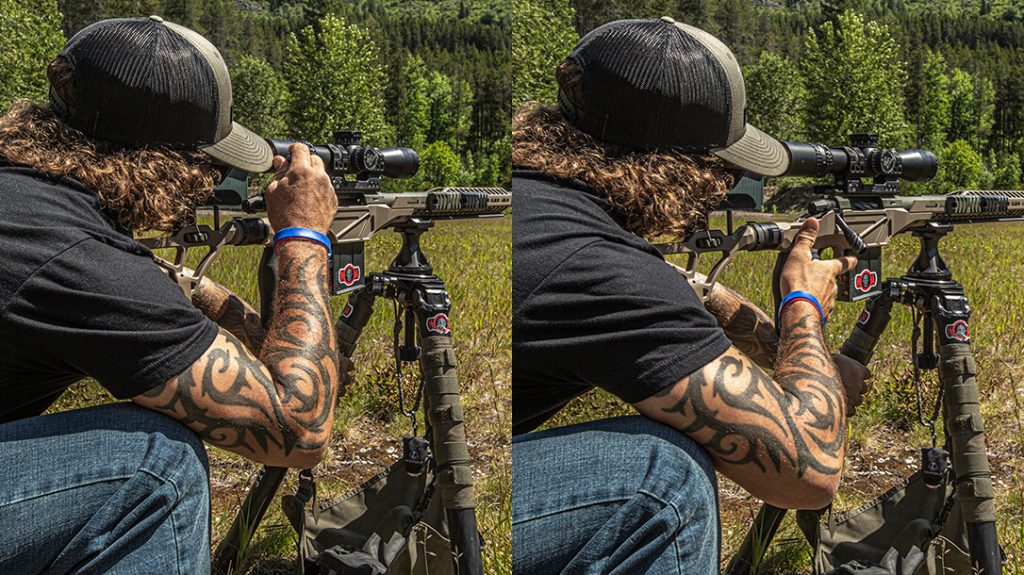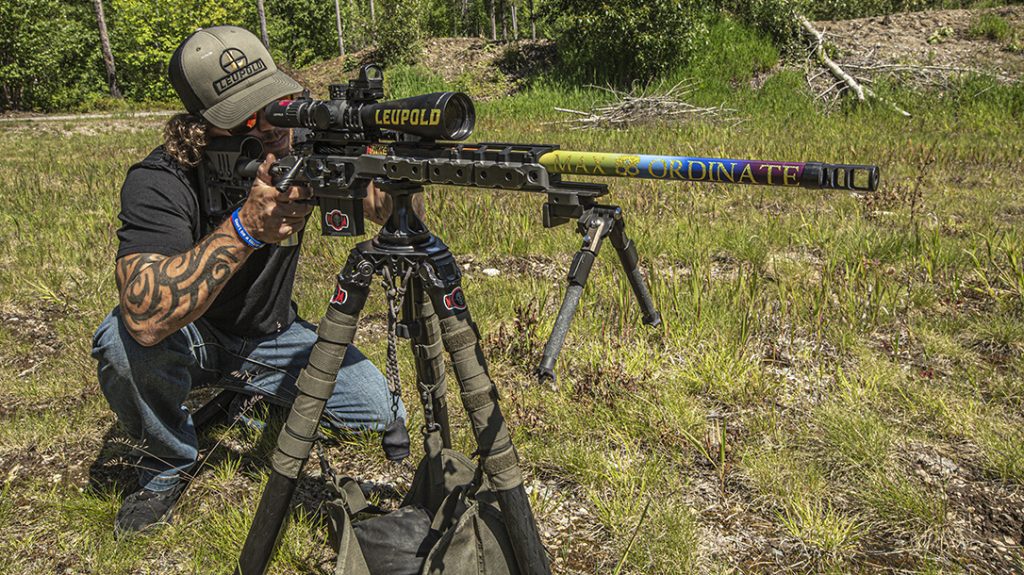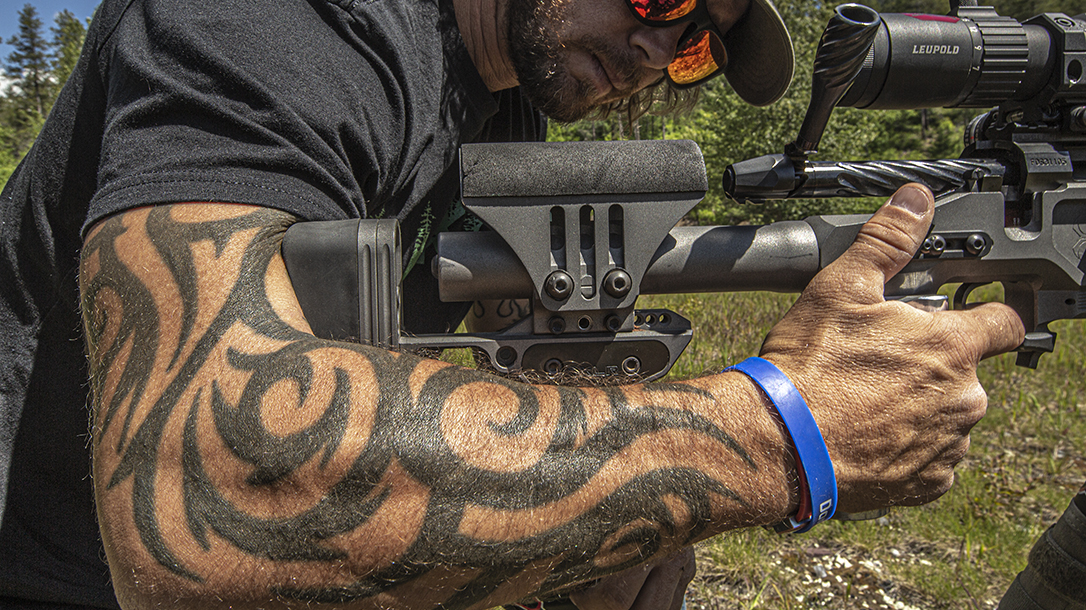A common misconception when buying a precision rifle off the shelf is that it is a turn-key affair. People think they’re ready to mount an optic before ringing steel at multiple football fields away. That could not be further from the truth. As a precision shooter, your rifle should be an extension of your body. When all aspects are operating in unison, that’s where the magic happens. From the mystical one-hole, 100-yard, five-shot group to the unicorn silver-dollar grouping at a grand, it all starts with rifle setup and fitment. Obviously, there are other factors to consider. However, this article is about length of pull and fitting your rifle to your body.
Length of Pull & Finding the Right Fit
Before we dive into the how, let’s first understand the why. Also, let’s understand for what application we are applying this little nugget of information. This isn’t Benchrest, F-class, NRA High Power, poke holes in paper at X distance away while using sighters and hundreds of wind flags. No, not here. We are living in the world of Tactical Precision Rifle marksmanship where the targets are steel. It’s hit or miss, baby; no sighters, no second chances.
Positions range from prone to some form of improvised supported position requiring a solid fundamental foundation. And, of course, let’s not forget the wind. It’s an invisible monster requiring deep thought, quick thinking and some luck as rarely will you have any indicator outside of the naturally occurring mirage and vegetation movement to aid you in your quest to compensate correctly.
Advertisement — Continue Reading Below
This style of shooting will put you in awkward positions. It will twist you, bend you, put a strain on your fundamentals and your ability to build positions consistently. Bone support, muscle relaxation, and natural point of aim tied together with proper body alignment must become staples in your game. With a rifle improperly fit to your body, these challenges will become harder to overcome. You will feel like you’re fighting your rifle as opposed to it being an extension of yourself. Everything from mechanical operations to gaining stability via contact with the support object will be negatively affected.
Understanding Length of Pull
In the beginning, before mounting your optic, the focus needs to be on the stock’s length of pull (LOP). The LOP is the distance from the trigger to the end of the buttstock. That is what dictates your ability to control the rifle, proper mechanical bolt operation and building consistent positions. Simply put, the stock LOP needs to match your body’s LOP.

Advertisement — Continue Reading Below
Throughout the precision firearms industry, there is a large problem. What is it? Manufacturers tend to utilize a long length of pull as the standard offering. I’ve taken measurements from some of the leading stock and chassis manufacturers; 13 to 13.5 inches is the average factory length of pull. Many shooters will either not know what the proper length of pull is when shopping or will believe the manufacturers standard setting is what is correct for them. It is more common nowadays to see adjustable LOP stocks and chassis systems.
Examples from the Manufacturers
Depending on the manufacturer, you will still encounter the same issue where the shortest LOP setting is slightly too long. XLR Industries comes to mind for a single-chassis system that allows for proper LOP for both short and tall shooters. Other manufacturers such as Masterpiece Arms or Falkor Defense offer two versions for their buttstock to accommodate different LOP requirements. However, these must be specifically requested from the factory as you will most likely not find the short version on the shelves at your local gun shop or gunsmith.
On the side of more traditional stocks made of fiberglass and epoxy, such as McMillan Fiberglass Stocks, Grayboe or Manners Composite Stocks, the solution is often not as easy. All three offer adjustable options for LOP. However, due to necessary hardware and adjustable cheekpiece fixtures, short LOP options are limited.
Advertisement — Continue Reading Below
Often the shortest version will be 12 inches unless you opt for the fixed length of your choice. Manners in past years released the MCS-Compact 1.0 and 2.0. They offer a wide range of LOP adjustability while not interfering with the cheekpiece hardware. Another consideration is adding any type of folding stock adapter; this will increase the buttstock length, possibly making your LOP even worse. Then, depending on which manufacturer or model you choose, the answer might be, “You got what you got, you’ll just have to learn to adapt.”
Measure Yourself
At this point you might be asking, “What is the correct stock length of pull? How do I check my body’s length of pull?” These questions are easily answered, but as you have already learned, it might be more difficult to achieve. There are two methods, which I will refer to as the hasty method and exact method. Both achieve the desired end state, but it’s more where or how you will use these methods.

Advertisement — Continue Reading Below
The body’s LOP is measured from the inside of the arm at the bend in the elbow, where your forearm meets your bicep, to the tip of your trigger finger, which needs to be bent at a 90-degree angle simulating a correct finger position to achieve a straight rearward trigger press.
The Exact Method
The exact method utilizes a ruler and an additional straight edge. You lay the ruler down your forearm, over the wrist, across the palm so the beginning of the ruler touches the tip of the 90-degree bent trigger finger. The additional flat edge is needed to lay across the ruler in a perpendicular fashion at the bend in the arm near the bicep to get the shooter’s exact LOP in inches or centimeters. This measurement is what you can send to manufacturers when ordering a custom stock build or if buying used online, asking the seller to measure the stock LOP to compare to your body’s LOP.
The Hasty Method
The hasty method is a much faster process but requires you have the stock in your possession. It will also help to have an action with the trigger installed to ensure your trigger finger placement is correct when checking LOP via the hasty method.
Advertisement — Continue Reading Below
Making sure the rifle is safe, clear and pointing the muzzle up to the sky, you will need to place the buttstock pad across the inside of your shooting arm at the bend between your forearm and bicep. Keep control of the rifle with your non-shooting hand. Then bend your shooting arm with your hand reaching for the grip and fire controls. Just like measuring with the ruler, you will place your finger on the trigger with a 90-degree bend in your large index finger knuckle representing correct trigger finger placement. This is your first check. Your second check is that your palm can achieve full contact with the grip, meaning no visible gap.
Final Pointers
Remember, the purpose of correct LOP is ensuring you can mechanically operate the bolt action without breaking your bone support. So, to account for those who might have long fingers, you need complete contact between the palm and grip to prevent false LOP results. For stocks or chassis systems that utilize a pistol grip setup, be sure to keep your shooting hand thumb off to the side of the grip instead of wrapping around the spine of the grip. The distance from the trigger to the rear of the pistol grip is often too large of a distance to allow for proper grip and trigger finger placement at the same time.
I hope this guide for determining your length of pull serves you well in your pursuit of accuracy and precision in the world of long-range shooting. Slowing the buying process down and making sure your rifle is set up for you is a minute detail that is often overlooked in the pursuit of Instagram likes and cool-guy gear.
Advertisement — Continue Reading Below
They say the devil is in the details. A small correction here or small tweak there can drastically change your ability to manipulate your firearm for the better. Take some time to check your length of pull. Despite what the Internet might lead you to believe, longer isn’t always better.























